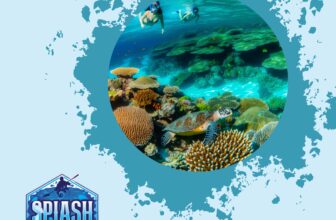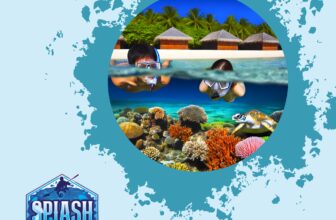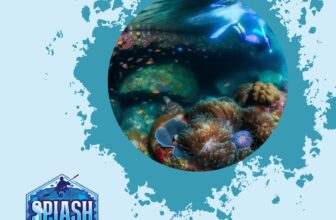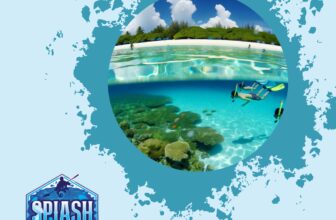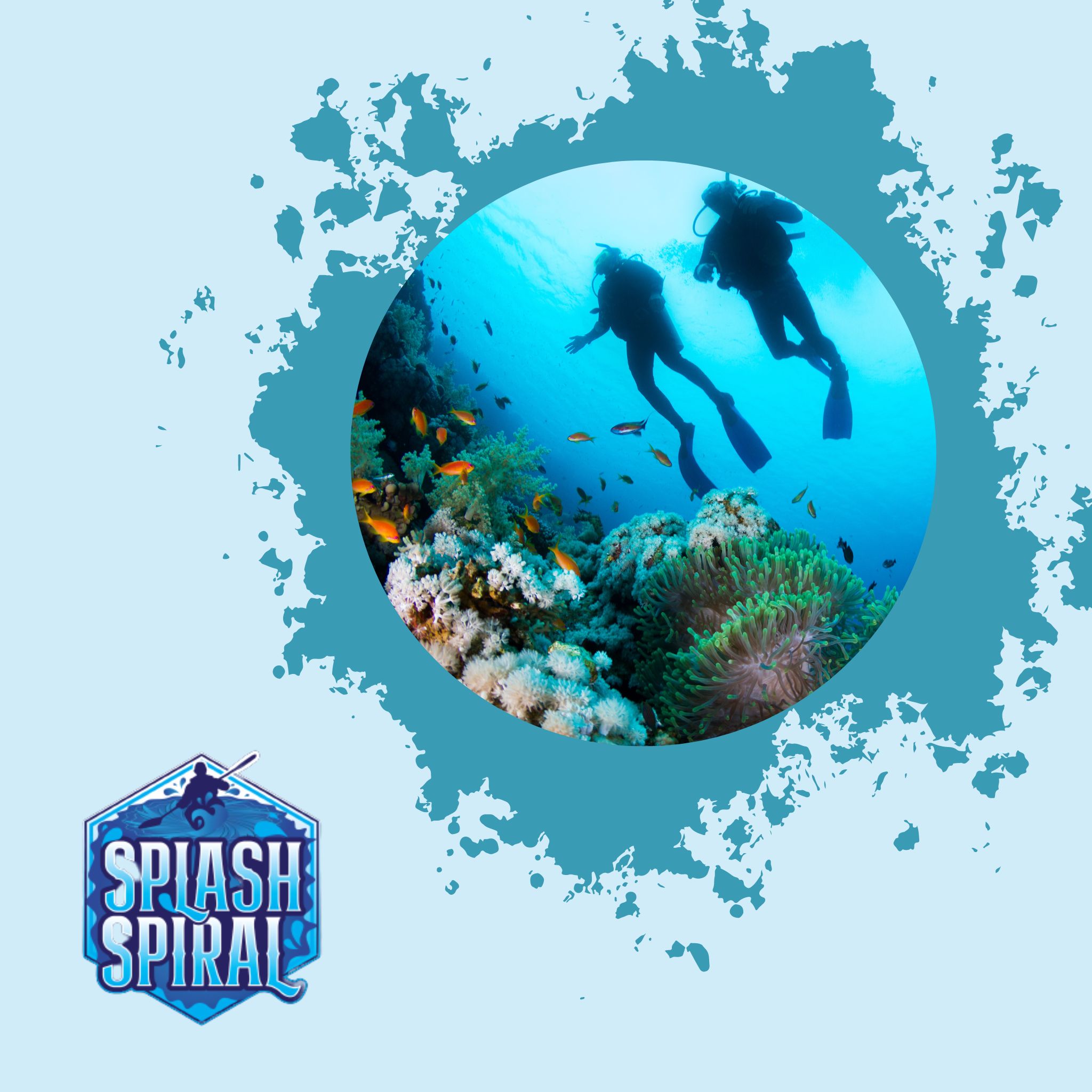
Reef diving is a form of scuba diving in which divers explore the intricate and magnificent world of coral reefs. Coral reefs are some of the most diverse ecosystems on the planet, and reef diving allows us to experience this vibrant underwater world up close and personal. The experience involves diving into shallow waters with an abundance of marine life that can be seen all around you.
Importance of Coral Reefs in the Marine Ecosystem
Coral reefs play a vital role in the health and stability of our oceans. They support over 25% of all marine life, which includes thousands of different species, many that we have yet to discover. Coral reefs also provide food, protection, and shelter for countless sea creatures including fish, crustaceans, mollusks, sea turtles and more.
Not only are coral reefs important for marine biodiversity, but they also play a significant role in supporting human communities. Many coastal communities rely on coral reefs for their livelihoods- whether through tourism or as sources for fishing and other ocean resources.
Additionally, coral reefs protect shorelines from storms by absorbing wave energy and reducing erosion. Unfortunately today, many coral reefs are declining at alarming rates due to human activities such as pollution and overfishing.
It is important that we take steps to preserve these vital ecosystems so future generations can continue to enjoy them. Reef diving provides us not only with an opportunity to appreciate these incredible natural wonders but also gives us a chance to learn about their importance in our global ecosystem.
Getting Started with Reef Diving
Choosing the Right Dive Center and Equipment
When it comes to reef diving, choosing the right dive center and equipment is crucial to having a successful dive. First, research different dive centers in your desired location to find one with experienced guides, good reviews, and a focus on safety.
It’s also important to check that they have well-maintained equipment that is properly suited for the type of diving you plan on doing. In terms of equipment, you’ll need a wetsuit, fins, mask, regulator, and buoyancy control device (BCD).
Depending on the depth of your dive and personal preference for comfort, there may be additional items such as gloves or hoods. Make sure to try on all equipment before diving to ensure proper fit.
Preparing for a Safe and Enjoyable Dive
Before heading out for a reef dive, there are several steps you can take to prepare for a safe and enjoyable experience. First and foremost, be sure you are physically fit enough for diving by checking with your doctor if necessary.
You should also ensure that all necessary paperwork such as medical forms or certifications are up-to-date. On the day of the dive, make sure you have plenty of water and sunscreen on hand as well as any necessary medications or snacks.
Take time before entering the water to check that all equipment is functioning properly and review hand signals with your guide. Remember that safety should always come first when diving.
Never exceed your comfort level or training level when it comes to depth or duration of dives. Be aware of potential hazards such as strong currents or marine life aggression and follow guidelines set by your guide or dive center at all times.
Exploring Vibrant Underwater Realms
The Beauty and Diversity of Coral Reefs
Reef diving is an incredibly unique experience that allows you to explore some of the most beautiful and diverse underwater landscapes on the planet. The moment you descend into the depths of a coral reef, you’re greeted by an explosion of color and life.
The sheer variety of species that call these reefs home is astounding, from tiny brightly colored fish darting in and out of crevices to massive schools of larger fish with vibrant scales glistening in the sunlight. One thing that’s truly mesmerizing about coral reefs is just how alive they are.
While it’s easy to think of them as static structures, they’re actually constantly growing, changing, and adapting over time. You might see a school of fish swim through one part of a reef only to come back later in your dive to find them completely gone, replaced by different species or new coral formations.
Common Reef Inhabitants: Fish, Turtles, Rays, and More
No matter where you decide to dive on a coral reef, you’re guaranteed to encounter a wide variety of marine life. Some common inhabitants include schools of brightly colored tropical fish like angelfish and parrotfish as well as predatory species like barracudas and groupers lurking in deeper waters.
You may also spot graceful sea turtles gliding through the water or rays gracefully flapping their wings across the ocean floor. In addition to these more well-known inhabitants, there are also countless smaller creatures like nudibranchs (colorful sea slugs), crabs hiding among rocks or living in symbiosis with corals , shrimp scurrying across the sandy bottom , lobsters lurking under sheltered ledges looking out for prey.
Unique Coral Formations and Colors
As mentioned before corals are alive and they grow , forming unique and intricate formations over time that can be breathtaking to see. You might find yourself swimming through tunnels formed by massive coral heads or exploring walls covered with delicate sea fans swaying in the currents.
The colors of the corals themselves are also a sight to behold, with shades ranging from bright yellows and oranges to deep blues, purples, and greens. One thing that’s important for divers to remember is the fragility of these ecosystems.
While they may seem indestructible at first glance, a careless touch or kick can damage the delicate coral structures irreparably. It’s essential to enjoy these underwater realms while keeping conservation in mind as you explore.
Navigating Reef Diving Challenges
Dealing with Strong Currents
One of the biggest challenges that divers encounter while exploring coral reefs is dealing with strong currents. It is important to understand how to work with, rather than against these currents, in order to conserve energy and avoid exhaustion.
Learning how to use underwater topography and natural features like rocks and boulders will help you navigate through the current without getting swept away. When faced with a strong current, it’s important to remain calm and focus on your breathing.
Use your fins to maintain direction and adjust your buoyancy as necessary. It’s also important to communicate effectively with your dive buddy or group so that everyone can stick together and avoid getting separated in the current.
Avoiding Damaging the Fragile Ecosystem
Coral reefs are fragile ecosystems that are easily damaged by human activity. It’s important for divers to be mindful of their movements and equipment while exploring these underwater worlds.
Avoid touching or standing on coral formations, as they are easily broken or damaged by even the slightest touch. Additionally, avoid stirring up sediment or disturbing marine life when diving around coral reefs.
This can disrupt the natural balance of the ecosystem and harm living organisms that rely on clear waters for survival. Staying aware of your surroundings at all times will help you prevent accidental damage while diving.
Staying Safe Around Potentially Dangerous Marine Life
While most marine life encountered while diving around coral reefs is harmless, there are some species that can pose a threat if not approached with caution. Examples include lionfish, sea snakes, eels, and sharks. It’s important for divers to be aware of potentially dangerous marine life in their area before entering the water.
When encountering potentially dangerous marine life while diving around coral reefs, it’s important not to panic or make sudden movements that may startle the animal. Keep a safe distance and avoid touching or disturbing the animal in any way.
If you are unsure of how to handle a situation, seek the advice of an experienced dive instructor or guide. Remember, respecting marine life is crucial not only for your own safety but also for the sustainability of the reef ecosystem.
Protecting Coral Reefs
The impact of human activities on coral reefs
Coral reefs are under threat from a variety of human activities. One of the biggest threats is global warming, which causes coral bleaching and can ultimately lead to the death of entire reef systems.
Overfishing is another major problem, as it disrupts the delicate balance of the food chain and can cause a decline in fish populations. Pollution from land-based sources such as agriculture and urban runoff can also damage coral reefs, as can direct physical damage from boating, anchoring, and tourism.
Ways to reduce our impact while diving
Divers have an important role to play in protecting coral reefs. By following a few simple guidelines, we can reduce our impact while enjoying these incredible underwater ecosystems. First and foremost, it’s important to choose a reputable dive center that follows environmentally responsible practices.
Make sure your equipment is well maintained to minimize leaks and other potential sources of pollution. When diving on coral reefs, it’s important to avoid touching or standing on the corals themselves.
Even small amounts of damage can have significant impacts over time. Be mindful of your buoyancy control and keep your fins well above the bottom to avoid stirring up sediment or damaging delicate organisms.
Supporting conservation efforts
There are many ways divers can support conservation efforts aimed at protecting coral reefs. One way is by joining local cleanup events aimed at removing debris that has accumulated on reef systems over time. Another option is volunteering with organizations that monitor reef health or conduct research into how best to protect these valuable ecosystems.
Travelers who want to make a difference in their destination communities may also consider supporting eco-friendly hotels or tour operators that have made commitments to responsible environmental practices. By working together with scientists, policymakers, and other stakeholders around the world, we can help protect coral reefs for future generations to enjoy.
Rarely Known Small Details about Coral Reefs
Different types of corals found in reefs
When we think of coral reefs, we often picture the vibrant colors and intricate shapes of hard corals. However, there are actually two main types of corals found in reefs: hard corals and soft corals. Hard corals, also known as stony corals, create the structural foundation of coral reefs through the secretion of calcium carbonate skeletons.
Soft corals, on the other hand, do not produce a hard skeleton and instead rely on their flexible body structures for support. Within these two categories, there are over 800 species of hard coral alone.
Each species has its own distinct shape and coloration, from the branching Acropora to the massive boulder-like Porites. Soft corals come in a wide range of colors as well, including pink, yellow, purple and red.
The symbiotic relationship between corals and algae
One fascinating aspect of coral reefs is the symbiotic relationship between corals and tiny algae called zooxanthellae. The algae live inside the tissues of the coral polyps and provide them with energy through photosynthesis. In return, the coral provides shelter for the algae.
This mutualism is critical to both parties’ survival; without zooxanthellae to provide energy for growth and reproduction ,coral polyps would not be able to survive in nutrient-poor tropical waters where they typically reside. However ,this relationship can be disrupted by factors such as rising sea temperatures or pollution .When under stress ,coral may expel their zooxanthellae in a process known as bleaching , which can lead to eventual death if prolonged .
How Corals Reproduce
Coral reproduction is an amazing phenomenon that typically occurs once a year during seasonal events known as coral spawning. During this time, corals release millions of tiny gametes into the water column, where they can be fertilized and develop into new coral colonies. Different species of corals have varying methods of reproduction.
Some hard corals release their eggs and sperm simultaneously in a mass spawning event, while others time their spawnings to coincide with specific lunar cycles. Soft corals generally reproduce asexually by budding off new polyps from the main colony.
Coral larvae are incredibly vulnerable to predation and environmental stressors, but those that survive will eventually settle onto a suitable substrate and begin to form the basis of a new coral colony. This process can take many years to complete, but it is crucial for maintaining the health and diversity of coral reef ecosystems.
Conclusion
The Importance of Preserving Our Oceans for Future Generations
It is imperative that we take action to protect our oceans and the delicate ecosystems within them. Coral reefs are among the most important and diverse habitats on Earth, providing a home to countless marine species and playing a vital role in our planet’s ecology.
However, coral reefs are under threat from pollution, overfishing, and climate change. We must do all we can to preserve these precious resources for future generations.
This includes reducing our carbon footprint, supporting conservation efforts, and making responsible choices when it comes to seafood consumption. By taking these steps now, we can help ensure that the vibrant underwater realms we love will still be there for our children and grandchildren to enjoy.
Encouraging Others to Experience the Wonder of Reef Diving
Reef diving is a truly magical experience that everyone should have the chance to enjoy. The vibrant colors of the coral, the graceful movements of fish and other marine life, and the feeling of weightlessness as you glide through the water – it all adds up to an unforgettable adventure. If you’ve had the pleasure of reef diving yourself, then you know what I’m talking about.
So why not share your passion with others? Encourage your friends and family members to give reef diving a try – they might just discover a new favorite hobby!
In addition, supporting responsible tourism that respects and protects coral reefs can go a long way in preserving these underwater wonderlands for years to come. So don’t be afraid to speak up about sustainable travel practices when booking your next dive trip.
Reef diving is an experience like no other – one that offers beauty, wonderment,and adventure in equal measure. By taking steps now to protect our oceans and by encouraging others to appreciate them through activities like reef diving ,we can help ensure that these magical realms remain for generations to come.



